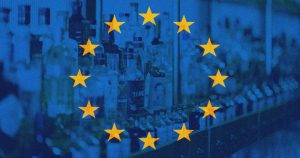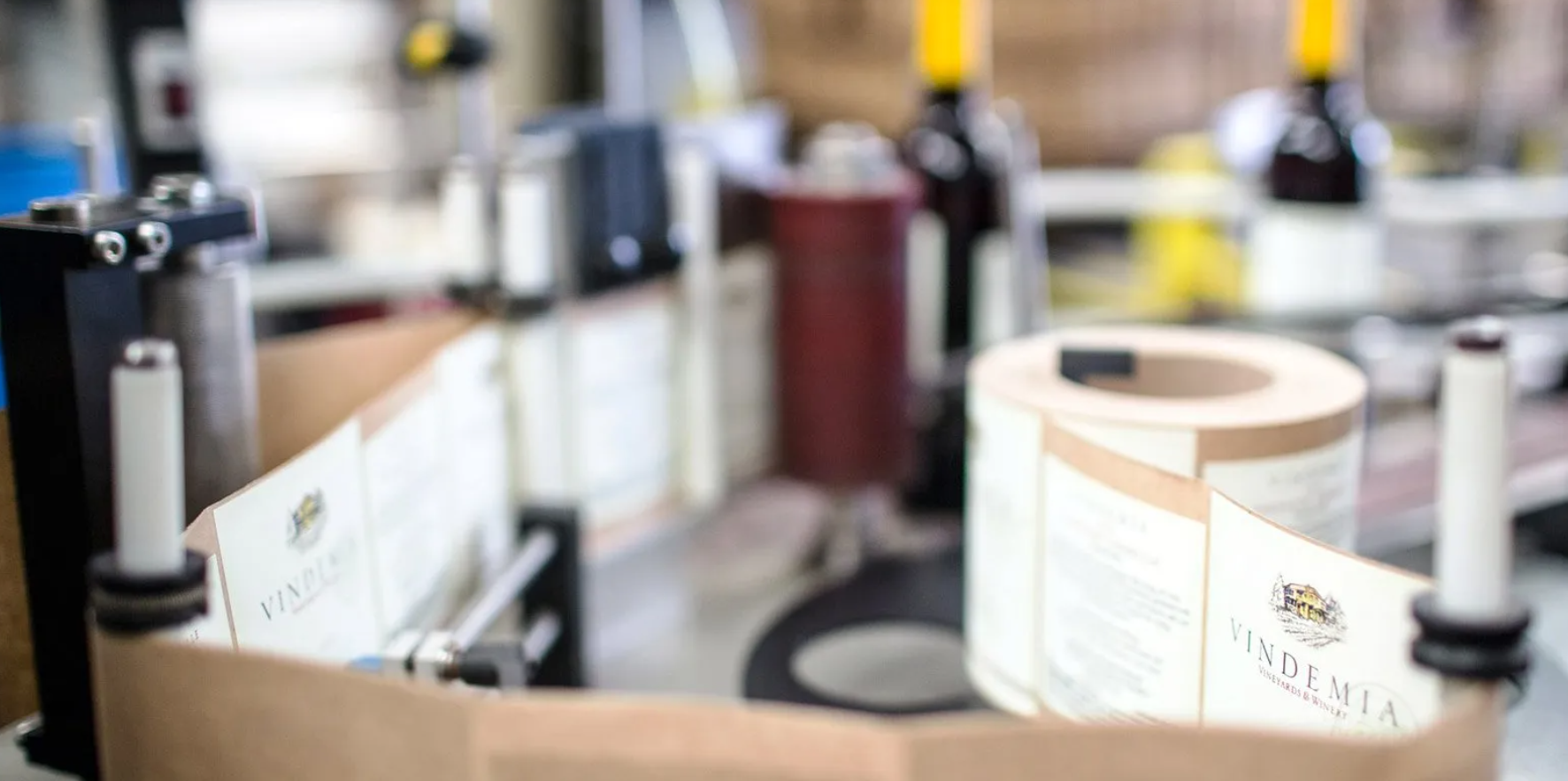Delving into the current EU wine regulation landscape, our article provides detailed insight into potential implications for the U.S. wine sector.
As the European Union pioneers the inclusion of ingredient and nutrition details on wine labels, the U.S. wine industry watches closely, considering its own potential shifts.
These notable regulations in the E.U., with updated rules now demanding more comprehensive labeling for wines, prompt the question: will the U.S. adopt similar wine labeling regulations?
Historically, wine labels in the U.S. have been more about tradition and legal essentials than detailed ingredient breakdowns. However, with global trends leaning towards change in transparency, wine marketing, and consumer information standards, the U.S. might soon follow suit.
The E.U. wine labeling regulations explained
The European Union (E.U.) introduced the Common Agricultural Policy (CAP) reform on January 1, 2023, with specifics on its enforcement, particularly concerning label accuracy.
By December 8, 2023, all wines, including imported wines in the E.U. market, must adhere to these updated labeling standards.
These wine label regulations mark a significant transition in the presentation and promotional strategies of wines within this expansive and multifaceted industry. New labeling standards emerge from an evolving consumer landscape that demands heightened clarity and insight into the contents of every wine bottle.
The E.U. wine labeling regulation necessitates that wine labels are obligated to display a comprehensive list of ingredients, especially those linked to allergies and intolerances (such as sulfites, gluten, and others), with a detailed list available for reference (view the full list here.)
Additionally, the label must present essential nutritional information, notably calorie content. While specifics like carbohydrates, sugar, and protein are also required, producers have the flexibility to furnish this data electronically via a QR code integrated into the physical label, which will lead to an e-label presenting the full scope of the required information.
For more information about this subject, head to our knowledge base.
Benefits of new E.U. wine labeling regulations

Here are some of the most important benefits of new E.U. wine labeling regulations:
- Complete Ingredient Disclosure: A groundbreaking aspect of the EU’s new regulations is the requirement for winemakers to disclose a complete list of ingredients. While the essence of wine is derived from grapes, the production process often involves a myriad of additives and processing aids. From common additives like tartaric acid to potential allergens such as egg whites or milk proteins, consumers now have the right to know what goes into their wine. By mandating ingredient listings either directly on labels or through digital avenues like QR codes, consumers can make choices aligned with their dietary needs and preferences.
- Nutritional Transparency: Incorporating a philosophy akin to food product labeling, wines under the new EU wine labeling regulations must now provide nutritional information. This encompasses vital details such as energy content and other nutritional elements. For individuals meticulously monitoring their dietary intake, this data is invaluable, ensuring that each sip aligns with their nutritional goals.
- Digital Disclosure: An intriguing facet of the EU’s regulations is the embrace of electronic disclosure methods. By facilitating the use of QR codes, the regulations strike a balance between comprehensiveness and label clarity. This digital leap not only ensures regulatory adherence but also paves the way for immersive consumer experiences, bridging the gap between wine producers and aficionados.
- Building Trust: Openness fosters trust, deepening brand loyalty. Transparent labeling is the bedrock of consumer trust. It’s a testament to a brand’s commitment to integrity, fostering enduring relationships rooted in transparency.
- Correcting Misunderstandings: Dispel myths like wine’s perceived high sugar content. With clear labeling, misconceptions about wine, such as exaggerated sugar content, are debunked, paving the way for informed consumer choices.
- Attracting Health-Conscious Consumers: Nutritional insights cater to diet-conscious wine consumers. Detailed nutritional insights resonate with health-conscious consumers, facilitating choices aligned with their wellness journey.
- Market Differentiation: Transparent labels offer clarity. In an oversaturated market, transparent labeling emerges as a beacon, offering clarity amidst choices.
- Prioritizing Safety: Vital for those with allergies or specific dietary needs. Transparent labels are indispensable for consumers navigating allergies or specific dietary regimens, ensuring safety and peace of mind.
- Global Alignment: Easier access to international markets with uniform labeling. As global markets gravitate towards stringent labeling norms, embracing EU standards positions U.S. wineries favorably in international arenas.
- Educative Tool: Labels can educate consumers about wine nuances. Detailed labels serve as educational catalysts, empowering consumers with insights into wine nuances and origins.
- Promoting Responsible Consumption: Clear alcohol content details encourage moderation. Clear information on alcohol content encourages responsible consumption, championing a balanced approach to wine enjoyment.
- Sustainability at the Forefront: Labels can echo a brand’s values, from sustainability to quality. In an era marked by environmental consciousness, labels championing sustainable practices resonate deeply with eco-conscious consumers.
The U.S. wine labeling regulations
U.S. wine labeling has been overseen by the Alcohol and Tobacco Tax and Trade Bureau (TTB), distinct from the Food and Drug Administration’s purview for many food items.
This has meant a focus on basic identification and compliance. But with the EU pushing boundaries, the U.S. might reconsider its approach, especially given the voices demanding clarity on what goes into the wines they love.
In 2022, the Center for Science in the Public Interest (CSPI) and the National Consumers League successfully litigated against the Alcohol and Tobacco Tax and Trade Bureau (TTB) for neglecting a 2003 petition seeking enhanced alcohol labeling regulations.
The CSPI disclosed that the TTB has committed to drafting guidelines for standardized alcohol content, calories, allergen, and ingredient labeling for alcoholic beverages. This move is pivotal, given that U.S. wine labeling standards have largely remained untouched since 1935.
As E.U. wines with comprehensive labels become more prevalent in the U.S., consumers anticipate heightened demand for similar transparency for domestic products, potentially paving the way for U.S. regulatory shifts.
As the Center for Science in the Public Interest – CSPI – reported, “the Treasury Department’s Alcohol and Tobacco Tax and Trade Bureau (TTB) has agreed to issue proposed rules requiring standardized alcohol content, calorie, and allergen labeling on all beer, wine and distilled spirits products [and to] begin preliminary rulemaking on mandatory ingredient labeling.”
The US move has been a very long time coming and results from legal action by consumer groups and the CSPI against the TTB for failing to act on a 2003 petition submitted by 69 organizations and individual citizens, including four deans of schools of public health, and calling for alcoholic beverages to be treated in the same way as other beverages and food products.
Opponents of the move who hope that implementation of labeling legislation may still be delayed will be dismayed to learn that the House and Senate Appropriations Committee’s 2023 budget treats the issue as ‘critical’ and calls for urgent action.
What is the impact of E.U. wine regulations on U.S. wineries?
The U.S. wine industry stands on the precipice of change. With evolving consumer expectations, compliance with EU wine regulations for US wines imported and distributed in the EU market will be crucial.
But transparency isn’t just a buzzword; it’s a pillar of trust for millennials. As researchers conclude, a remarkable 94% of this demographic expresses loyalty towards brands that are transparent. When they switch to transparent brands, they tend to stick, signaling a long-term shift in purchasing behaviors.
However, the transition in the US market, similar to those in the EU, isn’t without hurdles. Wineries face the challenge of redesigning labels, securing TTB approvals, and trying to find a reliable solution for e-label implementation.
Craft Technology’s commitment to innovation is evident through its e-label solution, showcasing its readiness to facilitate QR code and e-label implementations for all wineries aiming to export their wines to the EU market.
As the wine industry evolves, it becomes increasingly crucial to strike a harmonious balance between regulatory adherence, satisfying consumer expectations, and preserving the core essence of winemaking.
In this evolving context, Craft Technology’s e-label solution emerges as a vital tool, assisting U.S. wineries and winemakers in meeting stringent wine labeling requirements and regulations in a secure and effective manner.
Conclusion
In a world where consumers are more informed and discerning than ever before, the European Union (EU) has taken a pivotal step forward with its new wine labeling regulations. These regulations, designed with transparency and consumer empowerment in mind, are reshaping the wine industry and setting new standards for global markets.
Craft Technology’s e-label solution offers US wineries a comprehensive solution tailored to ensure full adherence to EU wine labeling regulations. Furthermore, our expert team monitors the possible changes in the US wine label regulations. By integrating this platform, US wine producers can seamlessly align with upcoming US regulatory wine label requirements, ensuring consistent compliance.
For more information:
- New EU wine label regulations: Complete guide for wineries
- EU Wine Labeling Requirements, December 2023: Important Updates
- Step-by-step guide to QR code e-label upload
- Why use QR codes to comply with new EU wine regulations?
- In-house e-labeling: Avoid costly errors
- New EU wine labeling: Compliance made simple
- Data Collection For Winemakers: Mastering E-Label Upload

